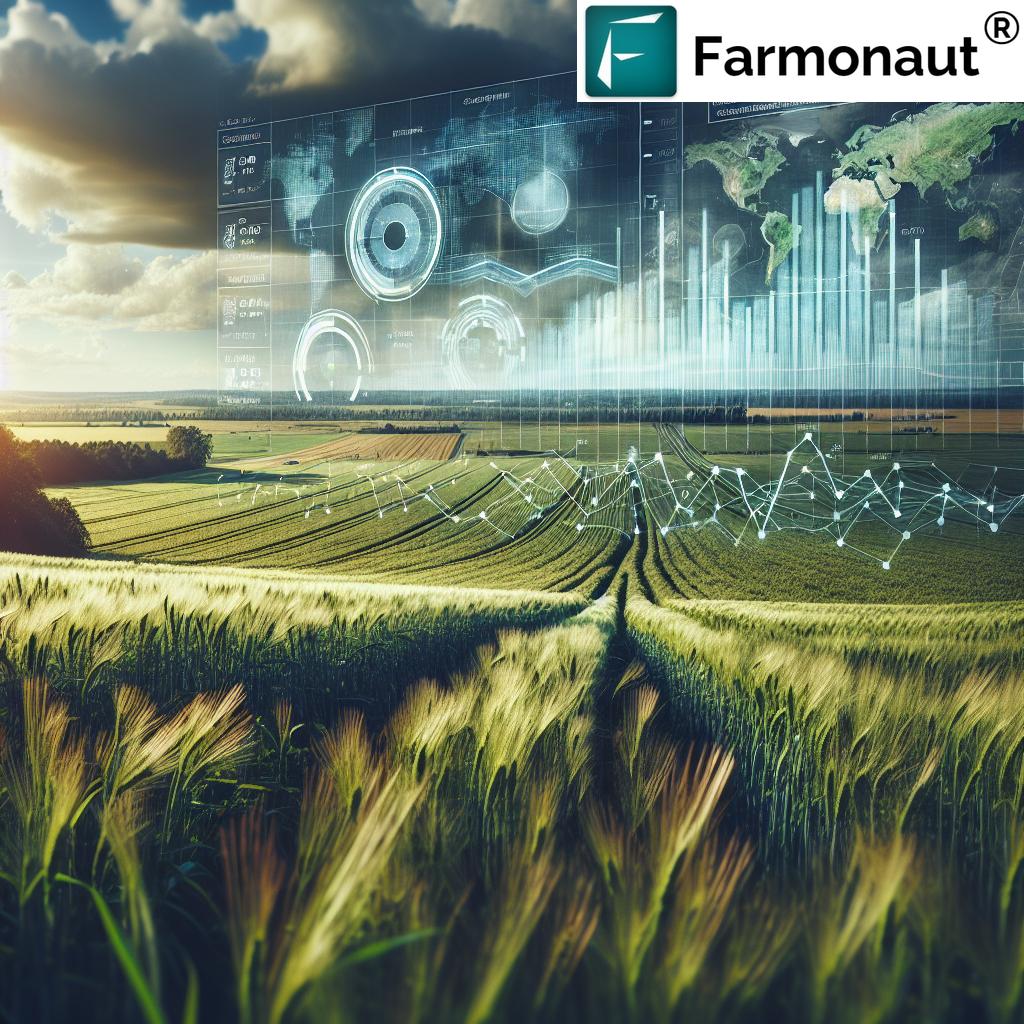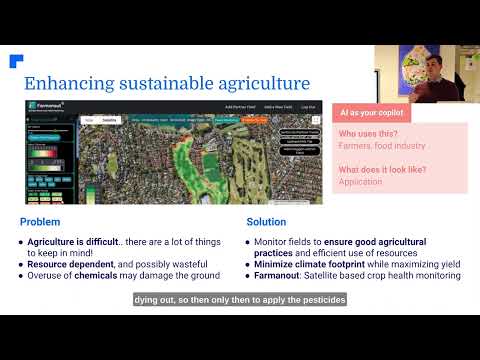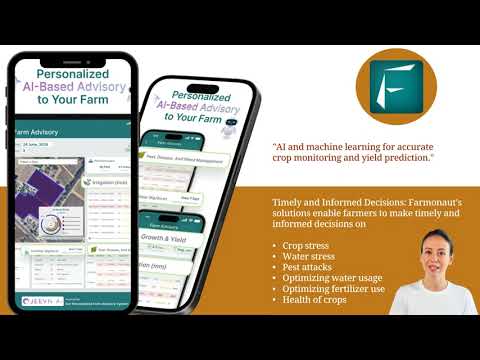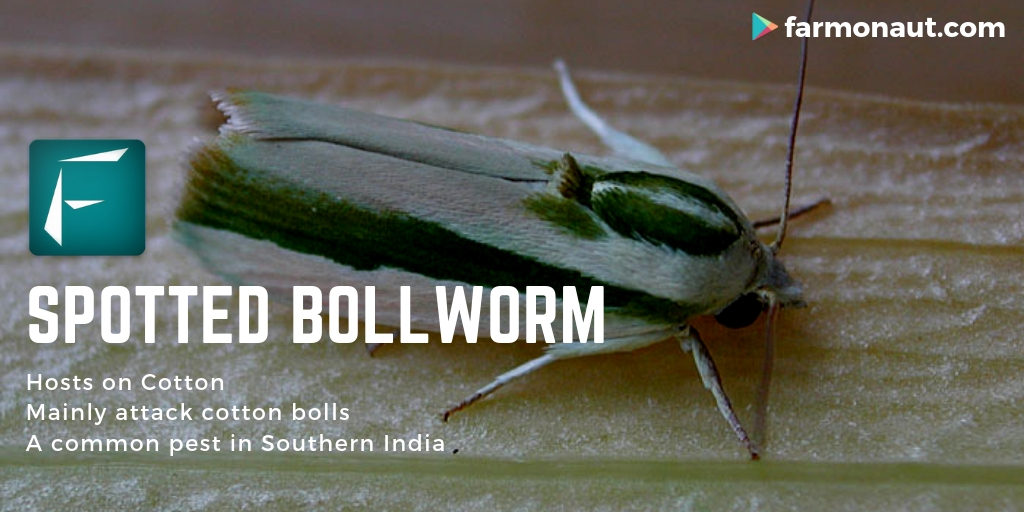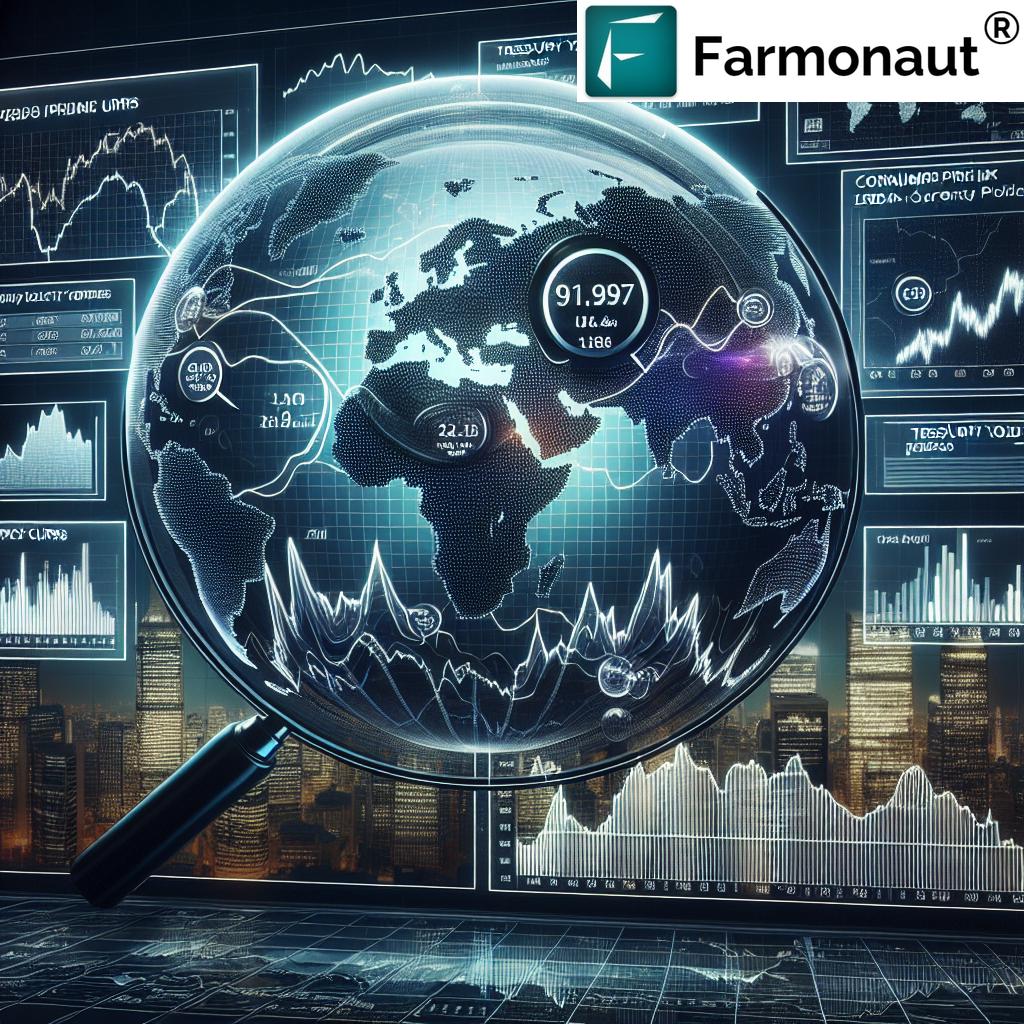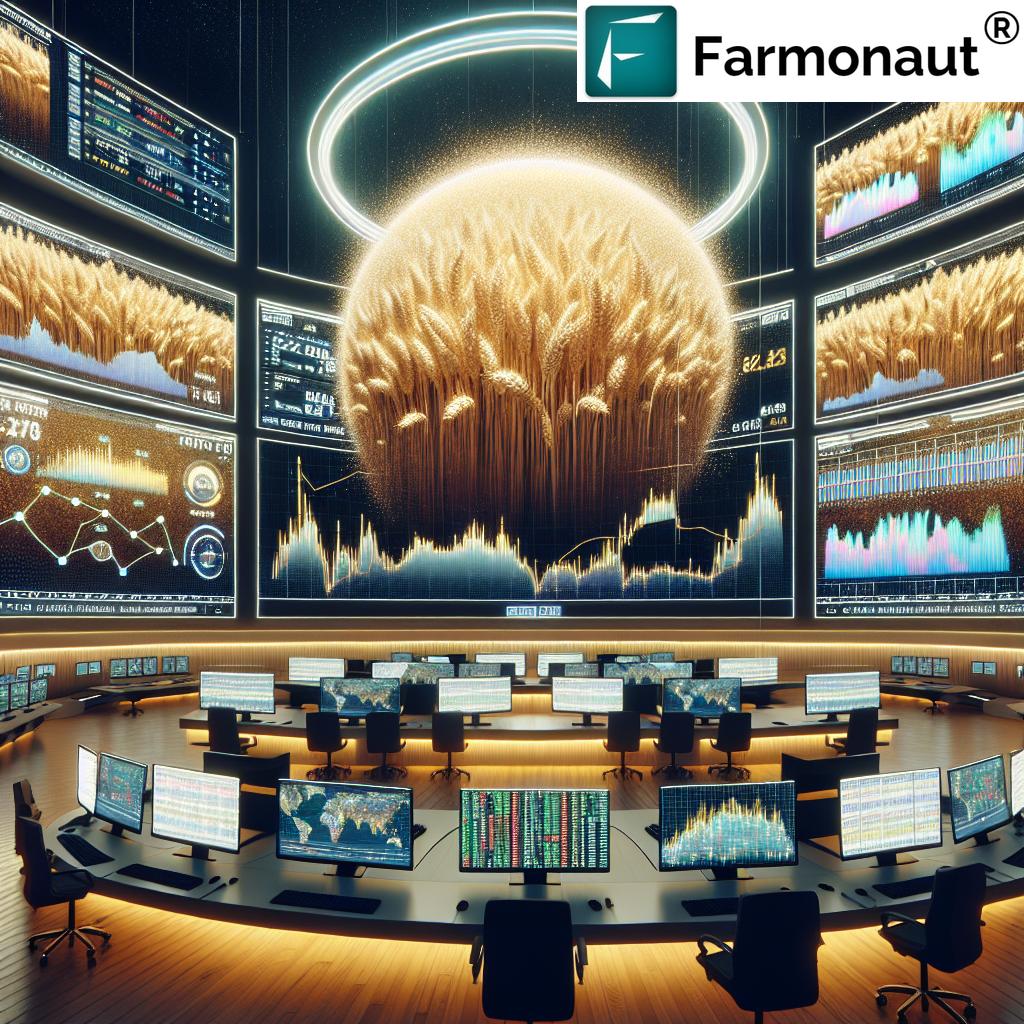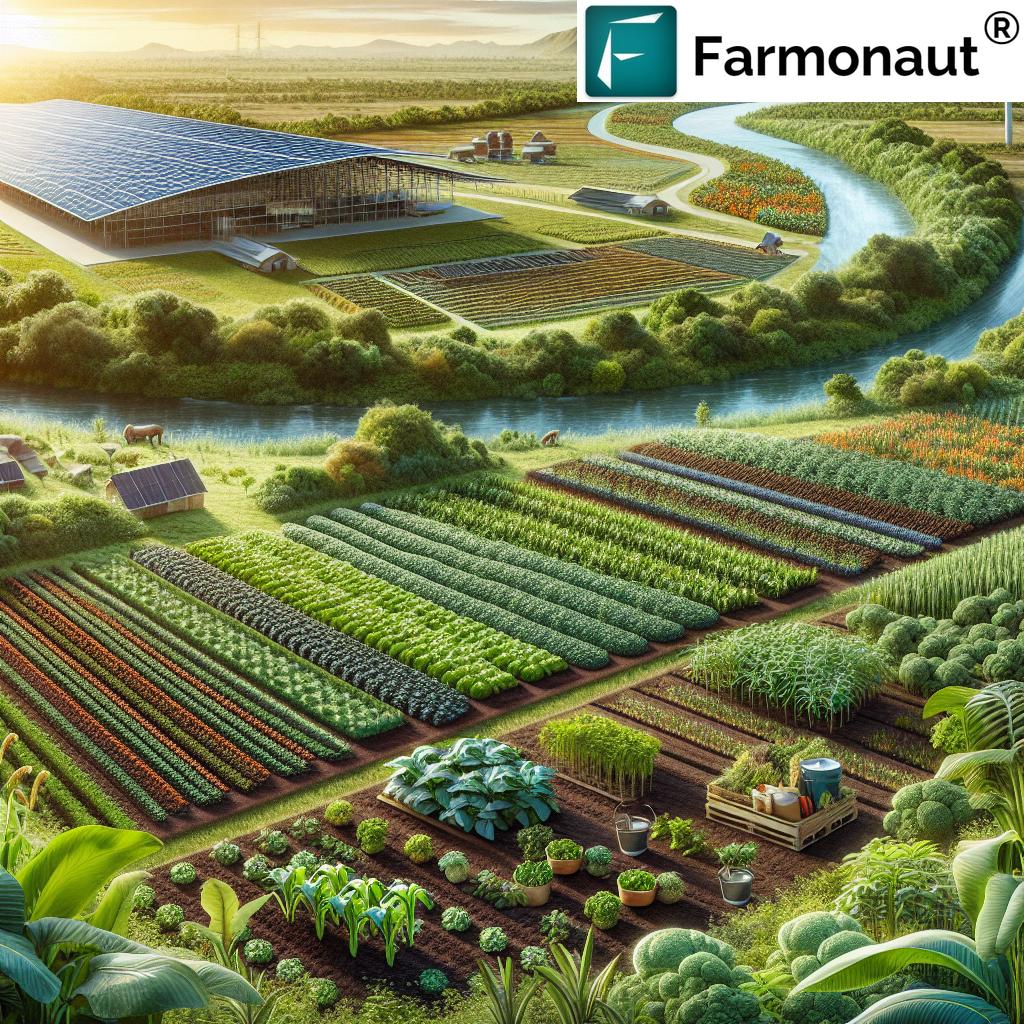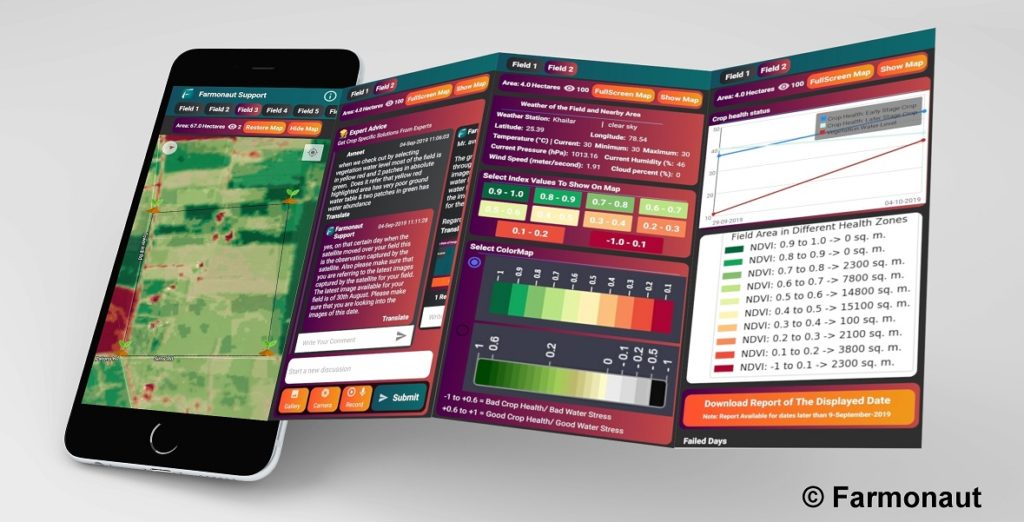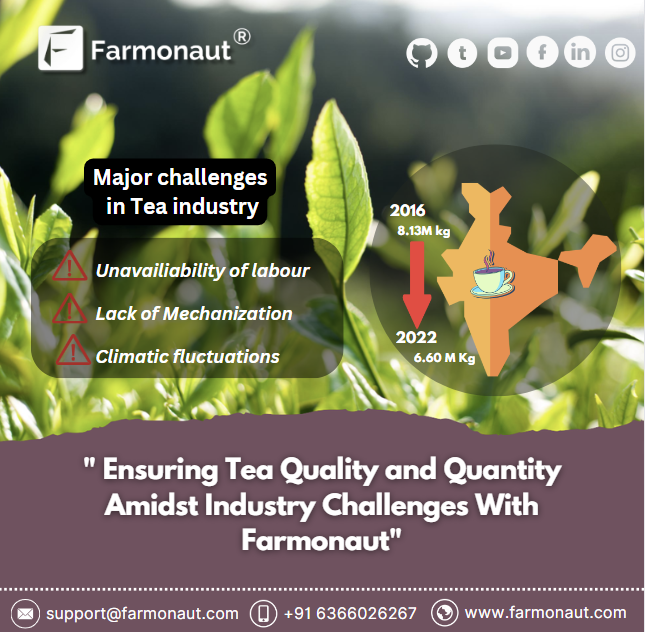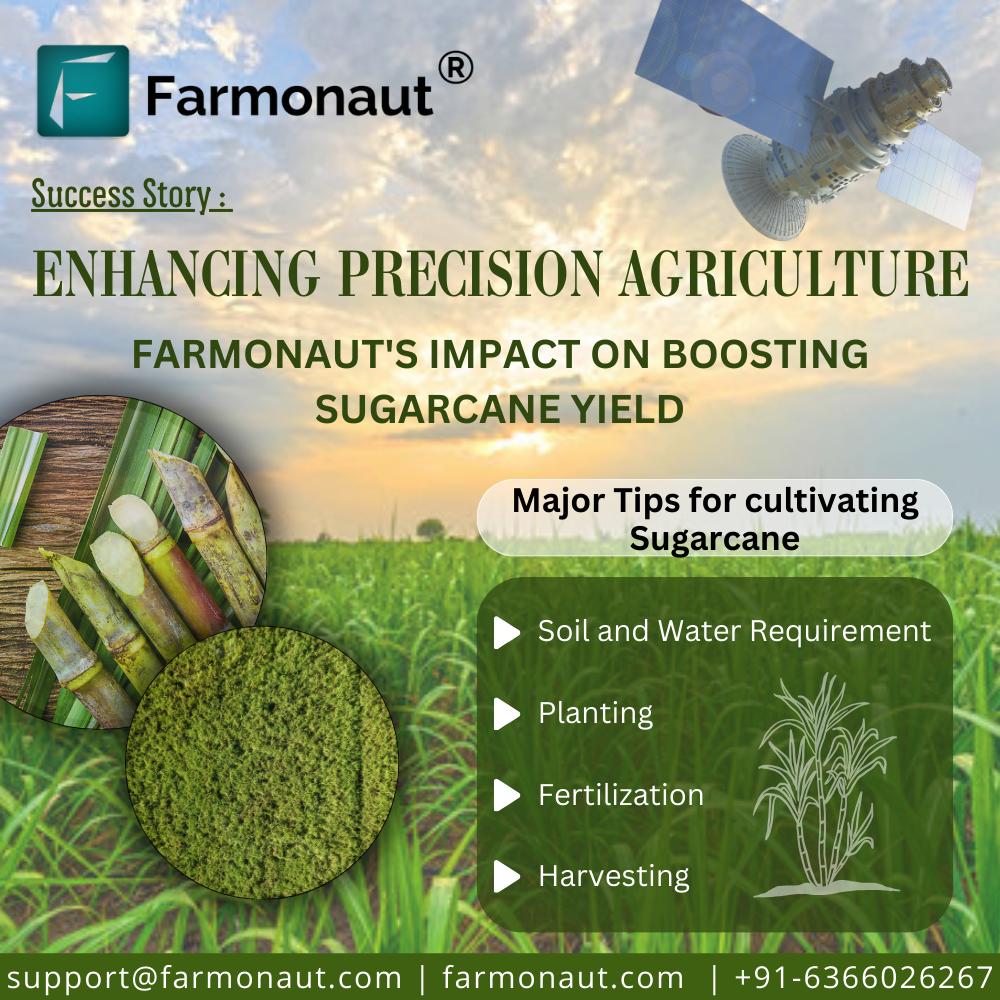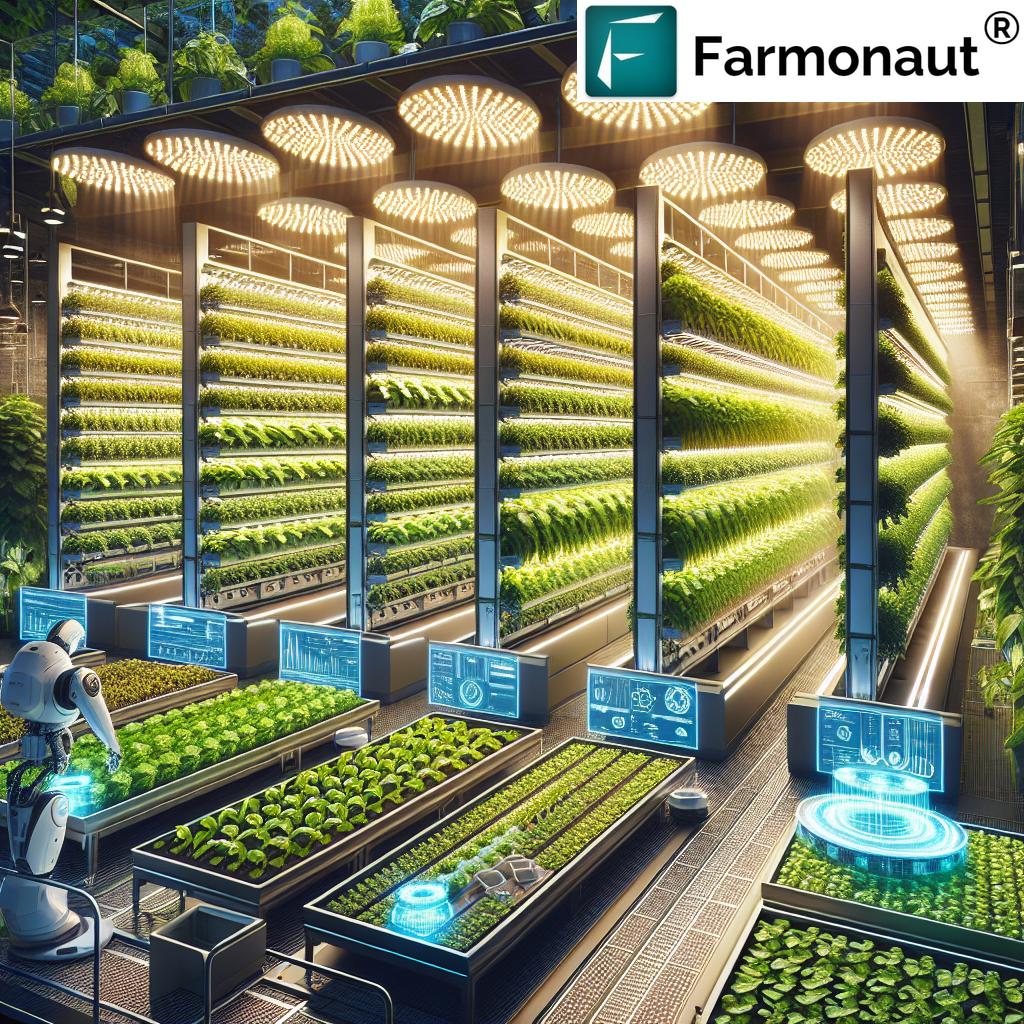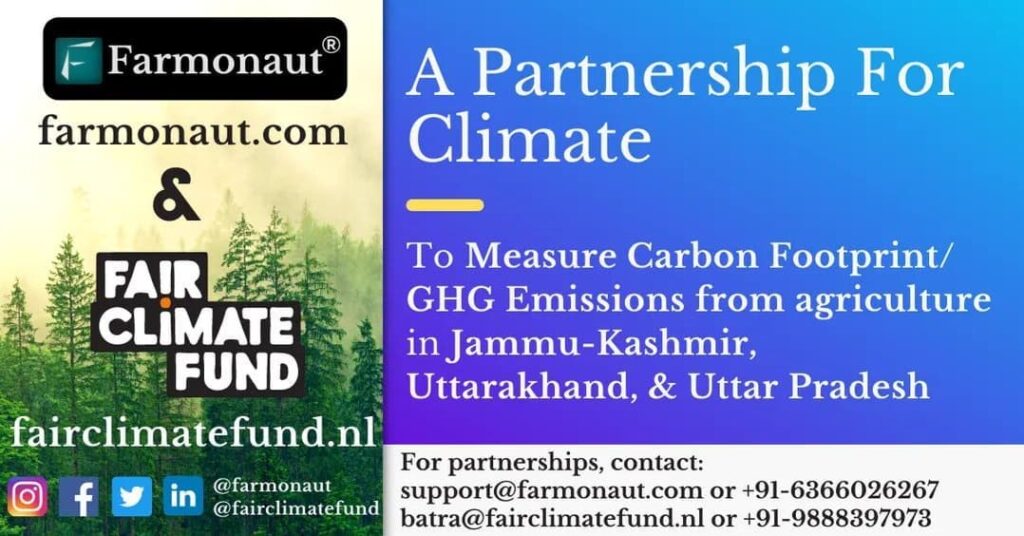Price Forecasting of Agricultural Commodities: Shocking New Tech!
Table of Contents
- Introduction: The Importance of Price Forecasting in Agriculture
- Price Forecasting: An Overview of Methodologies
- Key Factors Influencing Agricultural Commodity Prices
- Major Challenges in Price Forecasting
- Role of Technology and Innovation
- Farmonaut: Powering Next Generation Forecasting Solutions
- Comparative Analysis Table of Price Forecasting Technologies
- The Future of Price Forecasting: Opportunities & Outlook
- Frequently Asked Questions
- Conclusion: Key Takeaways for Stakeholders
“Over 80% of agri-businesses now use machine learning for price forecasting, revolutionizing market predictions.”
Introduction: The Importance of Price Forecasting in Agriculture
Agricultural price forecasting has never been more crucial for stakeholders across the agricultural sector, including farmers, traders, consumers, and policymakers. With a rapidly changing global landscape—shaped by food demand, volatile commodity markets, unpredictable weather events, policy changes, and shifting trade dynamics—the ability to make accurate predictions about commodity prices is vital.
Unexpected price drops can cause significant financial losses for producers, weakening the economic stability of entire regions and threatening the livelihoods of farmers. Conversely, price surges ripple through food supply chains, impacting overall resource allocation, costs, and ultimately, consumers.
Our modern agricultural sector depends on effective forecasting for:
- Strategic planning and resource optimization for both farmers and agribusinesses
- Farmers’ risk management and financial resilience
- Efficient functioning of agricultural supply chains
- Informed policy making and subsidy distribution by governments
- Reducing food insecurity and promoting economic stability
In this blog, we take a comprehensive look at how cutting-edge technologies—including machine learning, big data analytics, IOT, and satellite imagery agriculture—are redefining agricultural price forecasting and shaping the future of food.
Price Forecasting: An Overview of Methodologies
Let’s explore the fundamental agricultural forecasting methods and how they lay the groundwork for modern, tech-driven price forecasts. Each approach offers unique ways of analyzing data, uncovering patterns, and delivering predictions that guide strategic decisions across the agricultural sector.
1. Time Series Analysis: Reading Trends from Historical Data
- Involves the use of past price data to identify recurring patterns, trends, and seasonal variations.
- Methods like Moving Averages, Exponential Smoothing, Autoregressive Integrated Moving Average (ARIMA) models are commonly utilized.
- ARIMA models, for instance, use autoregressive and moving average parts, along with differencing, to capture complex shifts in commodity markets.
Example: Using 10 years of wheat market data to forecast potential future prices.
2. Fundamental Analysis: Assessing Market Dynamics
- Analyzes core supply and demand factors driving the market.
- Considers production volumes, national and global trade dynamics, weather conditions, policy changes, and inventory levels.
- Especially helpful when integrating remote sensing in agriculture—such as real-time crop stage assessment via satellites—to predict surpluses or deficits.
3. Econometric Modeling: Quantitative Forecasting & Causal Relationships
- Employs statistical tools—like regression analysis and vector autoregression (VAR)—to quantify relationships among economic variables and commodity prices.
- Enables a deep understanding of how input costs, policy changes, weather-driven supply shocks, or global economic events affect price formation.
4. Scenario Analysis & Simulation
- Involves defining plausible scenarios (e.g., drought, bumper harvest, export ban) and simulating their impact on commodity prices.
- Useful for risk assessment, contingency planning, and preparing for market volatility.
5. Machine Learning & Artificial Intelligence: Next-Gen Precision Forecasting
- Harnesses advanced machine learning algorithms (such as neural networks, decision trees, random forests) to process massive datasets.
- Can capture non-linear relationships and integrate big data sources like satellite imagery, sensor metrics, social media sentiment, and live market news.
- Particularly effective in agricultural price forecasting, especially when used alongside real-time crop monitoring and IoT.
Modern agriculture big data analytics and robust mathematical models have given rise to highly accurate crop price prediction—empowering all stakeholders with timely, actionable insights.
Key Factors Influencing Agricultural Commodity Prices
When we strategize or apply machine learning agriculture tools, we must understand the critical factors and variables that move commodity markets:
- Weather Patterns: Droughts, excessive rainfall, storms, and temperature shifts disrupt production, reducing supply and spiking prices.
- Soil & Crop Health: Disease outbreaks or soil fertility swings, detected through remote sensing and IoT sensors, can drastically change local or regional yields.
- Global Trade Dynamics: Tariffs, import/export policies, and international trade agreements impact both demand and supply on the world market.
- Market Demand: Changes in consumer preferences, population growth, and shifts in household income alter the overall demand for agricultural products.
- Geopolitical Events: Wars, sanctions, or political instability disrupt supply chains and cause suppliers to seek new markets, affecting global price discovery.
- Input Costs & Supply Chain Disruptions: Volatility in fertilizer, seed, energy, or labor costs feed directly into price models.
- Policy Interventions: Subsidies, price controls, buffer stocks, and regulatory changes can temporarily stabilize or unsettle markets.
Notice how every factor has both a direct and indirect impact—materially affecting planning, risk management, and financial forecasting for farmers, traders, agribusinesses, and even governments.
For example, with Farmonaut’s Carbon Footprinting, agribusinesses can measure field-level emissions, adapt operations for sustainability, and prepare for evolving global market regulations—all while maintaining a competitive edge in pricing.
Similarly, Farmonaut’s Blockchain Traceability Solution boosts transparency in the agricultural supply chain by validating every product’s journey, fostering trust in pricing and authenticity for both corporate buyers and end consumers.
And through Farmonaut’s Large Scale Farm Management tools, enterprises can use satellite intelligence to track plantation health, optimize yields, and better anticipate price changes.
Major Challenges in Price Forecasting
Despite revolutionary advancements in agricultural price forecasting, several persistent challenges can affect forecasting accuracy:
-
Market Volatility:
Natural disasters, disease outbreaks, sudden trade embargoes, and political shifts introduce uncertainty that disrupts even the most sophisticated models. -
Quality & Availability of Data:
In many regions, especially in emerging economies, historical data and real-time observations are limited or unreliable. Accurate data feeds are a prerequisite for effective forecasting. -
Non-Price Factors:
Changing consumer tastes, regulatory swings, or unpredictable policy moves can upend market dynamics, making them difficult to model quantitatively. -
Geographic Variability:
Soil type, local weather, and infrastructure cause commodity prices to behave differently by region. Forecasting models need to be both granular and scalable.
“Big data analytics can improve crop price prediction accuracy by up to 30% compared to traditional methods.”
Role of Technology and Innovation in Enhancing Forecast Accuracy
The fusion of AI, machine learning, big data analytics, and remote sensing in agriculture has ushered in a paradigm shift for agricultural price forecasting. Let’s break down how each technology is empowering greater precision and utility in commodity market analysis:
1. Big Data Analytics
- Aggregates vast, diverse datasets (satellite, IoT, market news, trade flows) for in-depth analysis.
- Identifies hidden trends and predictive signals, driving data-driven crop price prediction.
- Example: Correlating soil moisture readings with historical harvest data to forecast short-term wheat price fluctuations.
2. Internet of Things (IoT) and Sensors
- On-field sensors measure soil moisture, temperature, humidity, and crop health.
- Real-time data streams tighten the accuracy of yield and quality forecasts, directly impacting price modeling.
- These technologies empower stakeholders to act quickly, minimizing losses and optimizing profitability.
3. Remote Sensing and Satellite Imagery Agriculture
- Leverages high-resolution satellite and drone data to monitor crops at scale.
- Detects pest infestations, drought stress, or early maturity, providing granular insights that feed into forecasting algorithms.
- Broad regional coverage enables tracking both large commercial farms and smallholder plots.
4. Artificial Intelligence and Machine Learning Agriculture
- AI-driven models continuously learn from new data, adapt rapidly, and uncover non-linear relationships previously invisible to traditional statisticians.
- Techniques like deep learning, natural language processing (NLP), and reinforcement learning allow the extraction of sentiment signals from market news and social media in real time.
- Machine learning brings unprecedented accuracy and scalability to agricultural price forecasting, as well as flexibility to handle new risk variables.
Harnessing these advanced technologies, farmers, traders, and policy makers gain real-time visibility into dynamic markets, equipping them with timely alerts, price risk management, and predictive power.
Browse Farmonaut’s API or dive into our API Developer Docs to unlock satellite and weather analytics for automation and AI-powered decision making in your agribusiness workflows.
How Farmonaut’s Jeevn AI Advisory System Leads the Way
The Jeevn AI Advisory System by Farmonaut is a next-generation, AI-powered advisor that delivers personalized, real-time intelligence to farmers and agronomists. It leverages satellite data, context-aware algorithms, and expert models to:
- Push tailored weather and market forecasts directly to farmers’ smartphones
- Deliver actionable recommendations on irrigation, fertilization, and pest control, raising farm financial efficiency
- Supercharge resource allocation and risk management, resulting in improved returns and minimized losses
Farmonaut: Powering Next Generation Forecasting Solutions
At Farmonaut, our mission is to make precision agriculture affordable, accurate, and accessible for every farmer and agribusiness worldwide. Here’s how our platform is transforming agricultural price forecasting and strategic planning:
1. Satellite-Based Crop and Soil Analysis
- Using multispectral satellite imagery, we deliver instant crop health monitoring (NDVI, NDWI) and soil moisture assessment at plot-level granularity.
- This empowers farmers to predict yield shifts that may impact supply and price forecasts.
2. AI-Driven Advisory & Decision Support
- Our Jeevn AI Advisory System provides expert guidance, blending satellite analytics, historic patterns, and predictive models for actionable farm management and price risk insights.
- Recommendations are personalized—helping adapt to microclimatic changes, anticipate disease risks, and optimize the timing of production events.
3. Blockchain-Based Traceability for Transparent Markets
- Immutable traceability using blockchain ensures end-to-end transparency, driving fair pricing and bolstering trust in the agricultural supply chain.
- This is especially valuable for corporate clients and food manufacturers, who require visible proof of product origin, enhancing their brand value and end-consumer confidence.
4. Real-Time Fleet and Resource Management
- Advanced fleet tracking and resource management tools help reduce logistics costs and optimize supply, directly impacting margins and risk.
5. Carbon Footprinting to Meet Sustainability Demands
- Farmonaut’s carbon tracking solutions support compliance, sustainability branding, and financial incentives tied to environmental impact—all critical in modern agricultural financing and cross-border trade.
Comparative Analysis Table of Price Forecasting Technologies in Agriculture
A clear-eyed look at how traditional, machine learning, and big data analytics methods rank on core performance metrics for agricultural stakeholders:
| Forecasting Technology | Data Input Types | Forecasting Accuracy (Estimated %) | Implementation Cost (Estimated Range) | Scalability | Example Use Cases |
|---|---|---|---|---|---|
| Traditional (ARIMA, Econometric Models) | Historical price data, basic weather, simple economic variables | 60-75% | Low to Medium | Regional, limited scalability | Predicting seasonal crop price trends; policy scenario simulation |
| Machine Learning Models | Structured & unstructured datasets (satellite data, IoT, market news, weather, social media) | 75-90% | Medium to High | Highly scalable (regional, national, global) | High-resolution crop price prediction, risk management, real-time alerts |
| Big Data Analytics Platforms | Multi-source data: Satellite imagery, IoT, GIS, global trade flows, transaction-level records | 80-92% | Medium (subscription/API based) | Seamless global/enterprise scalability | Large-scale forecasting, supply chain optimization, cross-sectoral policy impact analysis |
The Future of Price Forecasting: Opportunities & Outlook
As we look ahead, a few trends will continue to transform the landscape:
- Integrated Platforms: All-in-one dashboards combining satellite, IoT, weather, and market signals give farmers and agribusinesses a strategic edge for decision making.
- Blockchain for Trust & Compliance: Verified product origins, seamless traceability, and compliance will differentiate major players in the global food market.
- Smarter Subsidy Allocation: Governments will use geospatial data and real-time monitoring to allocate subsidies and disaster relief more precisely.
- Precision Risk Management: Farm insurance and lending will increasingly rely on API-connected, satellite-verified data to lower financial risk and open up new possibilities for smallholder farmers.
Explore Farmonaut’s Crop Loan and Insurance Verification to see how satellite data is making farm financing and insurance claim processing more robust, faster, and reliable.
Moreover, with Farmonaut’s Fleet Management platform, large-scale agricultural operators can monitor and optimize logistics, making entire supply chains more responsive to market prices and risk scenarios.
Finally, every sectoral shift—from climate-smart agriculture to advanced supply chain analytics—will depend on highly accurate, scalable, and transparent agricultural price forecasting. The winners in the next era will be those who invest early in integrated, AI-driven, and accessible solutions.
Farmonaut Subscription Plans
Our flexible, scalable subscription offerings ensure you always access the latest technology, satellite-data updates, and AI-driven insights. From smallholder farmers to enterprise agribusinesses, there’s a plan for you on web, Android, and iOS.
Frequently Asked Questions (FAQ)
What is agricultural price forecasting and why is it so important?
Agricultural price forecasting involves predicting future commodity prices using historical data, market analysis, technology, and advanced models. Its accuracy directly impacts farmers’ income, traders’ strategies, policy makers’ subsidies, and even food consumers’ prices. Reliable forecasts enable risk mitigation, better planning, resource optimization, and food security.
How do new technologies improve crop price prediction?
AI, machine learning, and big data analytics integrate diverse sources—including satellite imagery, IoT sensors, global market news, and weather updates. These technologies allow deeper pattern detection, real-time monitoring, and dynamic adaptation, lifting the accuracy of price forecasts far above that of traditional methods.
What are the main challenges in agricultural price forecasting?
Key challenges include unreliable or incomplete datasets, market volatility (driven by weather or geopolitical events), accounting for non-price factors (policy, consumer preference), and modeling geographic variability in crop growth or market access.
How does Farmonaut support farmers and agribusinesses?
Farmonaut’s platform combines satellite-based crop monitoring, AI-driven advisory (Jeevn AI), blockchain-based traceability, and robust fleet/resource management. This toolkit supports precision agriculture, cost-effective risk management, supply chain transparency, sustainable production, and even seamless access to farm finance and insurance verification.
Where can I access Farmonaut’s services and technologies?
Farmonaut is available as a web app, on Android and iOS stores (see buttons above), and through developer-friendly APIs for easy integration with your data or workflow systems. Get started and optimize your farm or agribusiness with advanced forecasting and management solutions!
Conclusion: Key Takeaways for Stakeholders
Agricultural price forecasting is more essential than ever in the face of fast-changing markets, shifting climate cycles, complex supply chains, and stricter sustainability targets. While traditional approaches provided a foundational understanding, the fusion of machine learning agriculture, big data analytics, remote sensing, and IoT sensors is unlocking multi-layered, real-time, and scalable insights for everyone—from individual farmers to multinationals and policy makers.
At Farmonaut, we make these advanced technologies accessible, actionable, and affordable. Our platform stands at the forefront of the agri-tech revolution, supporting:
- Informed and effective decision-making for farmers
- Enhanced risk management and financial security
- Transparent, traceable, and trustworthy supply chains
- Optimized resource allocation and sustainable production
- Better market stability, food security, and economic growth
Explore our solutions today—your smarter, data-driven, and resilient farming future starts now.







